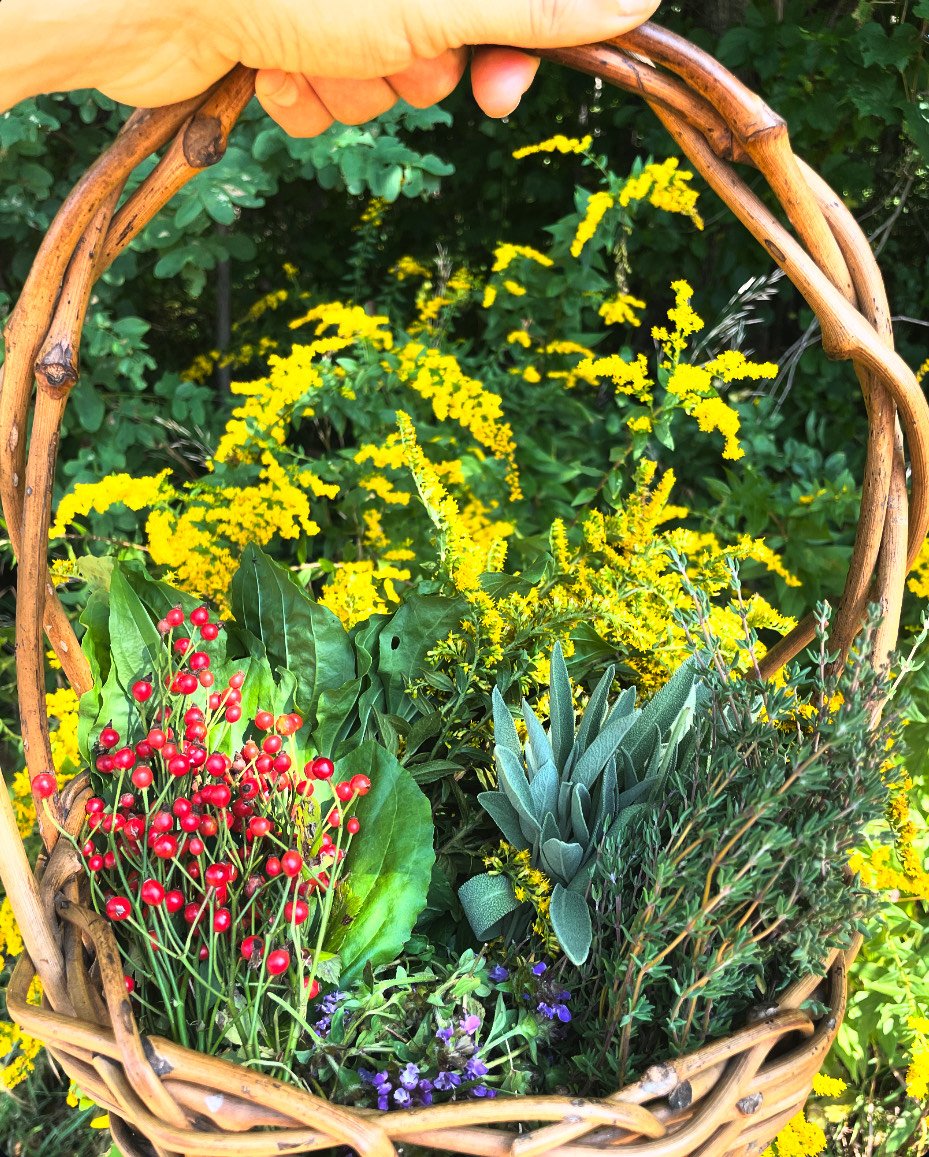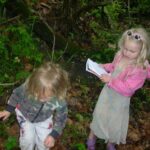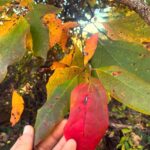
If you think about it, can a plant actually invade? Isn’t that anthropomorphism, which science cautions against adopting and supposedly rejects? And yet, ecology now classifies certain plants- including even some considered native- as “invasive.” I feel this notion is misguided. It perpetuates the “man vs nature” mythos and drives habitat destruction, the poisoning of the earth (supposedly for the sake of the environment) and separates us even farther from nature. I can’t tell you how many comments I’ve seen on social media- and even in classes and herb walks- from folks expressing their hate (actual wording used) for so-called invasives. My question to these individuals, most of who I know are well-meaning, is “why do you hold hate in your heart for a plant!?” How is that a regenerative place to be coming from? Can we truly bring healing to ecosystems and the planet if our primary motivating emotion is hate for some of its inhabitants? And why does the movement against these plants laud the application of herbicides, especially glyphosate (Round-up), as a primary tool to seek to control them when we know it’s poisoning water tables worldwide and linked to numerous chronic diseases?
This orientation also positions humans as the experts when we’ve been around a mere 300,000 years at most, which is a blink of an eye compared to plants. For instance, Roses first emerged in the fossil record at least 35 million years ago and Pine trees (Pinus genus) are believed to be at least 150 million years old. And yet us baby humans are the experts on where a plant “should” or “shouldn’t be.” I prefer a re-frame when thinking about and discussing these plants, and sometimes call these plants “opportunistic species,” a less-charged term from ecology, or “traveler plants,” although I’m still not 100% satisfied with these names and am still searching for an even better names for them. Indigenous scientist Dr. Jessica Hernandez has introduced the idea of calling these plants “displaced plant relatives.” How beautiful is that? It’s my current favorite name for them.
From an evolutionary view, these plants are merely doing what plants do and have always done- surviving. And one of the ways they’ve historically done this is by moving their ranges. The ice ages are a great example. Here in north america, many plant species migrated south during our last ice age and moved back north when the glaciers receded. And currently we’re seeing many tree species inching their ranges north due to climate change. Are these plants “invasive” or climate refugees? The lack of nuance in the conversation and, in some cases, the unwillingness to even engage in a discourse around this is problematic because there are few simple answers. Us humans have certainly driven some of these range changes by creating numerous opportunities for plants to move around by fragmenting and disturbing landscapes through development, contributing to climate change and participating in a globalized economy. Perhaps these plants changing their ranges is a symptom of all this dusturbance, however the field of invasion ecology would have us thinking the plants are to blame and the solution to eradicate them, almost always with the egregious chemical glyphosate aka Round-up. How is applying a poison ecological restoration? Particularly when the problem is quite often coming from upstream.
There’s also the issue of plant time vs human time. When looking at the issue of native vs non-native, we have to take the geological time scale into consideration and be willing to accept that we might not know what plant migration looks like in an age of climate chaos and in the midst of the global mass extinction event which is currently underway. Nature is dynamic and landscapes and plant communities are always in flux. Looking at nature as a time stamp or freeze-frame when considering what plants “should or shouldn’t be somewhere” is coming from an assumption that nature is static, rather than in process, which is a scientific and ecological falsehood. Plant succession is a small scale example of this- the process of a field turning into forest, for example. What metrics are we using to define native vs non-native? What scientific tools are we using to asses when an “invasion” is underway vs succession or ecosystem changes within a geologic timescale? These are difficult questions to answer and there is no consensus within the scientific community globally as to what constitutes a native plant.
In their native habitats, so-called invasive plants are often early successional species and when they arrive in a new land they’re often filling an ecological niche. This is because they tend to thrive in all the disturbance humans are so good at creating with roads, construction, resource extraction, and so on. If it seems like these plants are “taking over,” really it’s a symptom of the larger ecological degradation occurring all around us, not the root cause, and often they’re growing in and creating habitat in areas that most plants can’t tolerate. This disturbance us humans tend to leave in our wake is part of why certain plants follow us around and “invasives” are often some of the most widely distributed plants in the world. I like to zoom out and really consider what it means for a plant to be found almost everywhere humans are and bring an animist lens into it too. What might these plants be telling, were we willing to put down the Round-up long enough to listen? What might it mean to re-frame the narrative and consider our relationships with these plants as symbiotic and mutually beneficial (aka reciprocal) rather than combative? What truly constitutes an invasion or ecological disruption? When many of these plants tend to be wildly medicinal and provide ecological benefits such as erosion control, wildlife food and shelter, phytoremediation, building materials and more? It’s almost like they’re the clean-up crew that come in after humans pass through and mess everything up and are yet still offering us their gifts despite organized campaigns against their very existence.
In regards to thinking about our language around this, in the field of ecology plants are called “non-native invasives,” “invasive alien species,” “alien species,” and “colonizer species.” This is a language of separation and these terms immediately elicit a somatic response of danger and fear. If this language sounds similar to the xenophobia currently at-large in our country, it’s because it is! In the U.S. the terms “illegal alien,” “alien,” and “unauthorized alien” are used in myriad of immigration statuses and, as we know of course, no person is “illegal.” We can borrow less-charged terms from ecology and instead of saying an “alien” or “invasive” species, we can call it introduced, opportunistic or displaced plant relative. Instead of calling a plant a “colonizer species” we can say it’s an “early successional species.” Instead of a “colony” of plants we can call it a “stand.” And I’m sure that with a collective thought process, we can come-up with even better re-frame terms for all of these instead of reinforcing this doctrine, xenophobia, and divisiveness in our language around plants. Our words are a simple and powerful way we can actively resist and feed less into the myth that these plants aren’t somehow still a part of nature.
Part of being a bioregional herbalist means working with so-called invasive plants as part of our materia medica and holding them with equal value and reverence as we would any other plant. They are certainly abundant and a practical benefit is they usually can be harvested from areas where harvesting native plants is prohibited (just be sure the area isn’t sprayed with herbicides), like conservation areas, since they’re often so maligned, making them super accessible as well. Here in the northeast a few of my favorite introduced medicinals are Japanese Knotweed (Fallopia japonica), Wild Rose (Rosa multiflora), and Barberry (Berberis vulgaris, B. thunbergii). Their gifts are myriad, if we are willing to listen.
I 100% acknowledge that this topic is multi-layered and complex and I continue the conversation further- with more resources- in this article here: Where Does Star Magnolia Belong?




